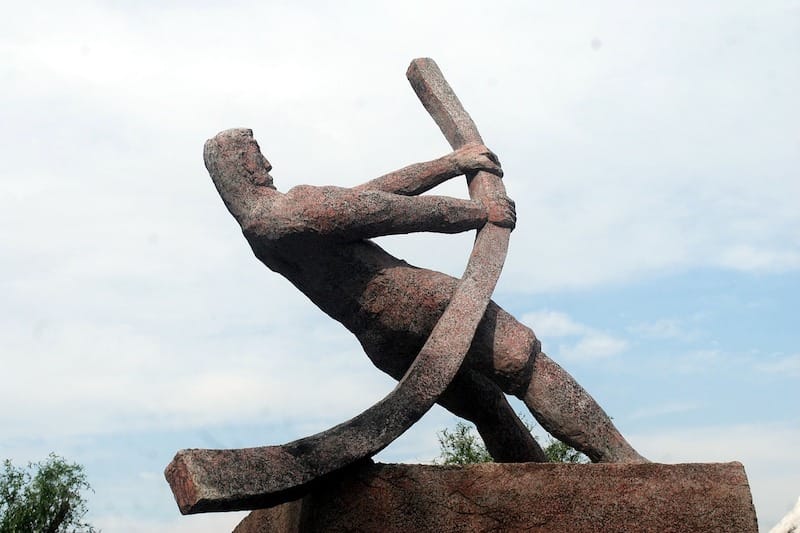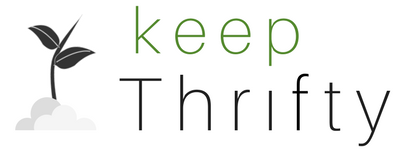
There’s one phrase we’ve heard over and over again since revealing our mini-retirement: “I mean, if you can make that work, it sounds amazing.” It pains me to hear because the person assumes that achieving a mini-retirement isn’t possible for them. But I know that they can. The formula for getting to a mini-retirement is simpler than you might think.
If you don’t think a mini-retirement is possible for you, what’s holding you back?
Is it your means? Maybe you feel like your income isn’t high enough - that your month-to-month spending is just covering your necessities and you don’t have any room for savings.
Is it your budget? Maybe you think the cost of a mini-retirement is too high for you to achieve?
Or is it your commitment? Are you afraid of what people would think? Of the sacrifices you’d have to make to get there? Of what life would be like when your mini-retirement is done?
The truth is, any and all of these can be addressed. You can find a way to earn more or save more. You can optimize a mini-retirement budget. You can commit to making it happen.
If you really want it, you can get there. But you need two things:
- You have to be excited about it
- You have to believe it’s achievable
There’s one solution to both of these: creating an exciting, achievable vision (EAV).
Big Success Starts with a Big Vision
Having a clear vision for what you want out of a mini-retirement can help you set an appropriate budget, identify the means by which you’re going to save up for it, and give you the conviction to persevere through the bumps along the way.
With a vision in your mind of what you’re working toward, you’ll find the pathway there starts to open up. But you have to want it, and you have to have clarity of what you’re shooting for.
Let’s go through an activity to jump-start that process.
Vision-Building Activity: “Money is No Object”
If you’re single, you can do this activity alone. If you’re married, get your spouse and kids involved. You’re going to need some paper or a computer so you can record your answers.
Ask yourself: “If money were no object for the next year but my life returned to normal afterward, how would I spend my time over that year?”
Open the world of possibilities and go through these questions:
- Who would you spend your time with?
- What would you do? What activities, events would you spend time on?
- When can these activities be done? Are some seasonal or scheduled on certain days? Or can they be done anytime?
- Where would you want to go or be?
Remember - in this scenario, money is no object but the goal is to use the year in a way that fulfills you for the long haul. The kind of year you’d look back on and say, “I’m so glad I did that!”.
If you’re having trouble coming up with ideas, consider resurrecting some childhood dreams.
Write down your answers for each question above. Then review your answers and rewrite the whole vision as a 3-5 sentence description of your Money is No Object vision.
Here’s an example vision:
In a 12-month mini-retirement, I’d explore Europe with my wife and kids. We’d like to experience different cultures and see cities and ruins that are way older than we can find around here. We’d like to go in January.
The key to the Money is No Object exercise is to identify your true desires by taking out the constraints.
But, for most of us, money most certainly is an object. Not many of us have the means to cover the budget for a 12-month whirlwind tour of Europe starting in three months. So how do we refine our vision to something achievable without watering it down so much that we lose interest?
Refining Your Vision
Constraints are a reality. Whether it’s finances or time, there are limits to what we can accomplish. You can do just about anything, but you can’t do everything.
With that in mind, circle back to your vision and ask why.
- Why do you want to spend time with those people?
- Why is that activity or event important to you?
- Why must the timing be “just so”?
- Why is a year important? Would it still be effective if it were shorter?
- Why is that location the right location?
The goal in asking why is to get to the heart of your dreams so you can identify the most important parts of your vision.
Maybe the timeline and location aren’t as important as you initially thought. Maybe you’re only pursuing that vision because it’s what would impress your friends or family – but it’s not actually what you want. Maybe you can find a way to get the spirit of what you’re looking for in a simpler or less expensive way.
The key to this exercise is teasing out the critical, exciting parts of your vision and refining it in a way that is more achievable.
Here’s how our original vision could be refined:
In a 3-month mini-retirement, I’d explore Southeast Asia with my wife and kids. We’d like to experience different cultures and see cities and ruins that are way older than we can find around here. We’d like to go before our kids graduate high school, but have 5 years until we feel they’d be old enough to get the most out of the trip.
The heart of the vision was experiencing cultures, geography, and history with family. The timeline can be shortened and the vision still has impact. The location can be changed and the vision still has impact. The timing can be changed and the vision still has impact.
By changing these details, we’ve kept the spirit and excitement, but have identified a much more achievable vision.
Exciting, achievable visions (EAV’s) are the most important factor in creating a mini-retirement - or any other financial goal for that matter.
This is where the magic happens.
The Power of an Exciting, Achievable Vision
When a vision is unachievable, we don’t try because we don’t think it’s possible.
When a vision isn’t exciting, we don’t try because we don’t think it’s worth it.
When a vision is achievable and exciting, we give it our all (Tweet this )
We’re willing to make tough trade-offs and sacrifices to get there.
Our family’s vision was to have a year of quality family time and the opportunity to focus on the passion projects we simply didn’t have time for when I was working a 9-5 job.
As my wife and I talked about this vision, we both knew that this year could be amazing and that it was totally possible if we could find a way to save one year’s worth of normal expenses. With this vision in-hand, we assessed our means and saw a world of opportunity.
I was making a good salary and with some cuts to our daily budget, we’d be able to set a healthy amount aside. We looked at our mini-retirement budget and realized that we could cut our expenses to make our target even easier to cover.
Most importantly though, our EAV helped us have the commitment to make some big leaps - selling our house, leaving my job, and getting outside our comfort zone, all of which made this mini-retirement possible.
When you’ve got an EAV, you’ve got the most important factor of all.
You’ll find a way to get the means, you’ll find a way to optimize the budget, and you’ll find yourself teeming with commitment.
So create your vision, build a budget, create the means to get there and make that vision a reality. I’m sure it’ll be exciting and I’m sure you can achieve it!
Did you actually go through the Money is No Object exercise? What did you come up with for your EAV? How did it change from your initial vision to one that’s achievable and exciting?
